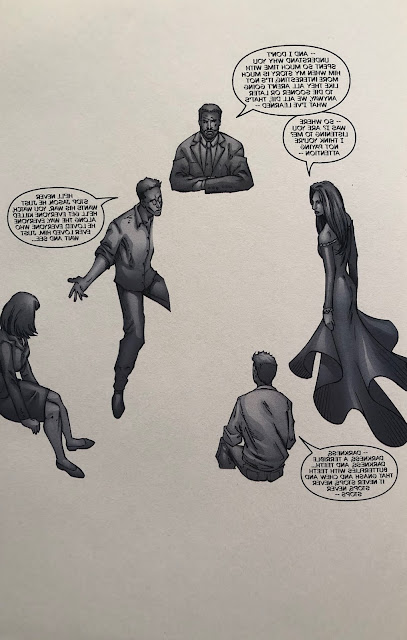One of those nice lazy days where I kept reaching for the next thing to read in the box. The streak came to a crashing halt when I discovered Warren Ellis’ Supreme was coming up :) That’s going to be a chore tomorrow…
Starlight 1-6
A wonderfully fun story with very little surprises. An Air Force pilot flies through a wormhole and saves an alien civilization from the usual tyrant. After his return to Earth, no one believes his story. Forty years later, recently widowed and purposeless, he’s once again called upon to reprise his heroics with the dominance of a new evil invader. Said heroics ensue.
Aside from flexing his as-usual strong action scene muscles, Mark Millar shows a surprising tenderness showing the family side of Duke McQueen’s life.
I was touched by the few scenes with his wife, and sympathized with him in the face of his adult sons’ casual thoughtlessness. The realness of it heightened the emotions.
Goran Parlov does excellent work here. It’s nice to see him tackling something more fantastical after all the dark realism of his Punisher pencils.
 |
| I love the old school X's to indicate getting knocked unconscious. |
Regret buying: No
Would buy again: Yes
Would read again: Yes
Rating: Good
Storming Paradise 1-6
The rare modern day war comic that isn’t written by Garth Ennis. Storming Paradise is perfect for me: A alternative history about Operation Olympic, the Allied invasion of Japan that would have taken place if the atomic bombs had not been ready in time. Things get off to a great start, but Chuck Dixon focuses a little too much on the micro and not enough on the macro details that I’m more interested in. By the end of the first issue, I realized that what I really wanted was to read a novel on the subject instead. (A quick bit of research reveals that there are several, which have been added to my list.)
Be that as it may, I was still enjoying this until the abrupt ending with issue six. Dixon appears to have just run out of space, and the series ends with no resolution. The Japanese develop the atomic bomb, President Truman asks the Soviets to enter the war, and...that’s it. There’s plenty of story left to tell, and it’s horribly unsatisfying to be left hanging like this. Ah well, I’ll just have to read the book someday. Hardly a bad thing.
Regret buying: No
Would buy again: Yes
Would read again: Yes
Rating: Nice























